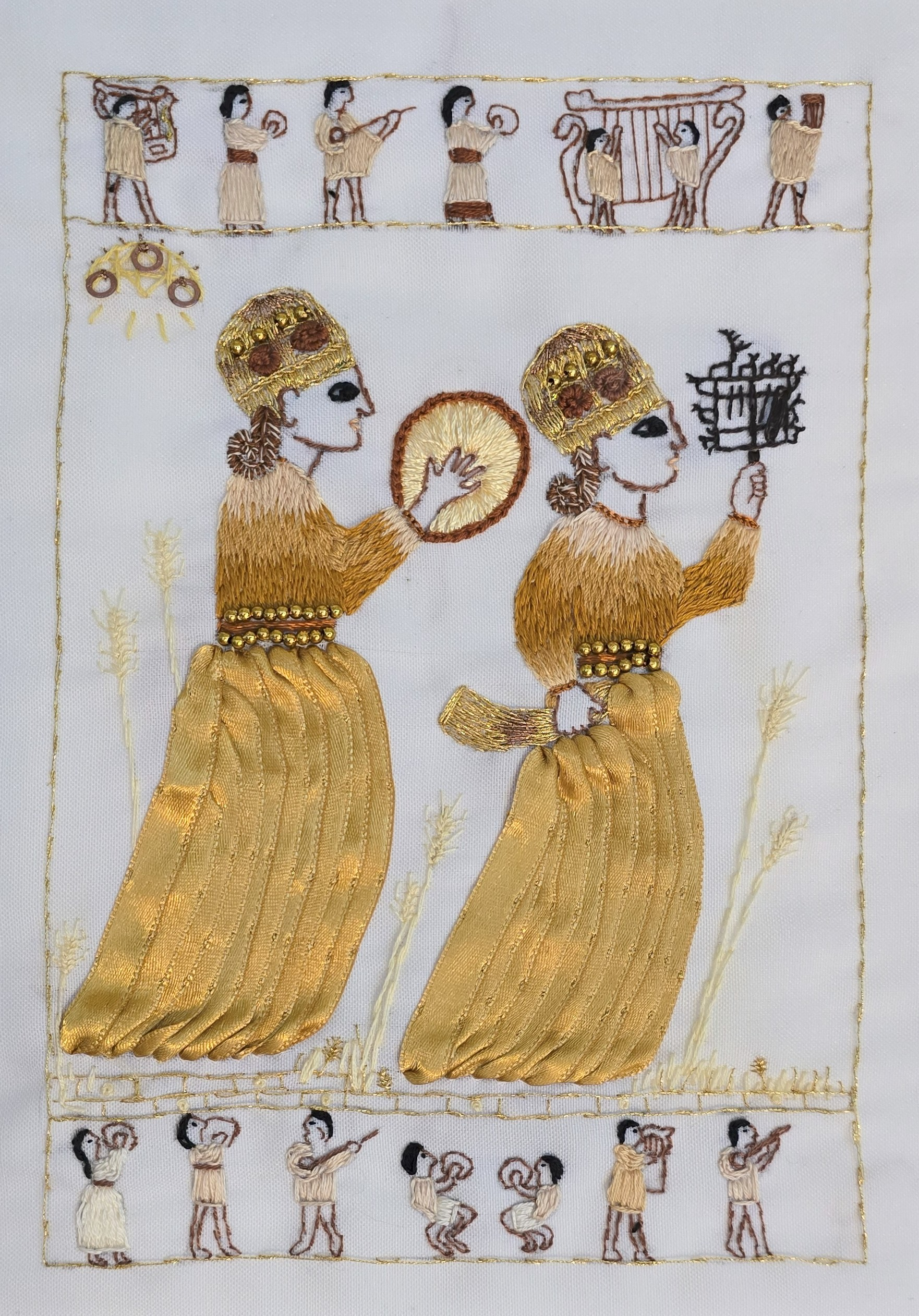Ninatta & Kulitta
Goddesses of Sound
Collection: Mythological Women Series
Technique and Medium: In this embroidery on alpaga fabric, backstitch, stem stitch, silk shading, bullion rose stitch, and fishbone stitch techniques have been used, enhanced with ribbon work and bead embellishment.
Dimensions: Inner frame: 23 x 16 cm, outer edge: 27 x 20 cm (height × width)
Inspiration: Reliefs from Yazılıkaya in Hattusa; vases from İnandık and Hüseyindede
Instruments: Center: tambourine, sistrum. Top and bottom borders: lutes and harp-family instruments
Dimensions: 20 × 35 cm - Height of border figures (top and bottom): approximately 2 cm
This embroidery references the mythological iconography that emerged in Anatolia during the early 2nd millennium BCE. Known as the musicians of the goddess of love and war, Ištar, Ninatta and Kulitta take the stage with tambourines and sistrums, inspired by the ritual scenes of ancient Anatolia.
Ištar: Take your tambourine (arkammi) and your rattle (galgalturi), walk to the edge of the sea, and astonish Hedammu, who is enchanted by the power of music.
Sistrum
Originally housed in the Museum of Anatolian Civilizations the sistrum is a bronze Hittite instrument that was used in rituals during the Bronze Age. The sistrum in my collection was made by F. Obul in 2021 upon my special request.
In some texts, Ninatta and Kulitta appear alongside Ištar in battles—they sing, dance, and perform magic. The figures depicted in the Yazılıkaya Sanctuary (Hattusa/Çorum, Turkey) are thought to represent Ninatta and Kulitta. In this embroidery, the central illustration is based on drawings inspired by these reliefs. The tambourine used during this period and the Hittite sistrum displayed at the Museum of Anatolian Civilizations are both embroidered in the hands of the figures.
The upper and lower borders of the embroidery are inspired by figures from the Hüseyindede and İnandık vases. These ceremonial vases, made of terracotta during the Old Hittite period, are valuable examples of Hittite iconography and ritual practices involving music. The musical scenes depicted on these vases also provide important information about the instruments used during the early Hittite period.
The figures depicted in the reliefs and vase illustrations are shown playing various harp-like instruments, stringed instruments, and small percussion instruments. After photographing these figures, their drawings were created and transferred onto alpaca fabric.


